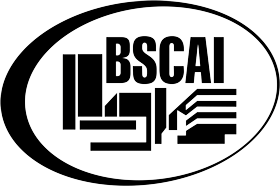
President Donald Trump signed the Tax Cuts and Jobs Act (Public Law No: 115-97) on December 22, 2017, which makes major changes to the federal tax code. Given the budget constraints that lawmakers had in enacting tax reform, most of the tax changes for corporations are permanent and most of the tax changes for individuals expire and return to current law in 2026. BSCAI members should prepare now to determine what effects the changes will have on business operations.
The summary of the new law provided below by BSCAI’s government affairs staff is only a summary and should not be used as a substitute for professional accounting advice. BSCAI members are encouraged to speak with a tax advisor before making changes affecting their businesses.
Key Tax Changes For Individuals
Alternative Minimum Tax For Individuals: Retained on personal filings, but raises the AMT exemption from $86,200 to $109,400 for married filers, and increases the phase-out threshold to $1 million.
Estate Tax: Doubles the exemption amounts ($11 million for individuals; $22 million for couples) through 2025; Reverts to current amounts thereafter. Maintains stepped-up basis.
Individual Income Tax Brackets: Below are the new individual income tax rates.
10% >: single, $0; head of household, $0; joint, $0;
12% >: single, $9,525; head of household, $13,600; joint, $19,050
22% >: single, $38,700; head of household, $51,800; joint, $77,400
24% >: single, $82,500; head of household, $82,500; joint, $165,000
32% >: single, $157,500; head of household, $157,500; joint, $315,000
35% >: single, $200,000; head of household, $200,000; joint, $400,000
37% >: single, $500,000; head of household, $500,000; joint, $600,000
Individual Mandate: Under the Affordable Care Act (ACA), individuals are required to maintain health insurance coverage or pay a fine. Repealed beginning Jan. 1, 2019.
Medical Expense Deduction: Maintains the deduction for expenses exceeding 7.5 percent of AGI in 2018, and 10 percent beginning in 2019.
Standard Deduction: $12,000 for individuals, $18,000 for head of household and $24,000 for married couples filing jointly.
State and Local Tax (SALT) Deduction: Limits the state and local tax deduction to a combined $10,000 for property tax, and either state and local sales tax or state and local income tax.
Key Tax Changes For Businesses
Alternative Minimum Tax For Corporations: It is eliminated.
Bonus Depreciation: Allows full and immediate expensing of short-lived capital investments for five years. Applies both to new equipment placed in service or used equipment purchased and placed in service.
Business Interest Deduction: Caps the Net Interest Deduction at 30 percent of EBITDA through 2021. Caps the Net Interest Deduction at 30 percent of EBIT starting in 2022. Businesses with average annual gross receipts of less than $25 million over a three-year period are not subject to the 30 percent limit.
Cash Accounting: Allowed for businesses with average gross receipts of less than $25 million over a three-year period. Not required to keep inventories. Exempt from uniform capitalization rules.
Corporate Income Tax: Permanently reduced to 21 percent.
Net Operating Loss: Eliminates net operating loss carrybacks and limits carryforwards to 80 percent of taxable income.
Pass-Through Businesses Income: Establishes a 20 percent deduction of qualified business income from certain pass-through businesses. Specific service industries, such as law and consulting, are phased out between $315,000 and $415,000.
Sec. 179 Expensing: Limits are increased to $1 million per year with phase-out beginning at $2.5 million, indexed for inflation after 2018. Expanded to include improvements made to existing nonresidential real property including roofs, heating and air-conditioning.

 The Down and Dirty on Cleaning in Virus Season
The Down and Dirty on Cleaning in Virus Season How Surfactant Use is Expanding in Commercial Cleaning
How Surfactant Use is Expanding in Commercial Cleaning Operational Excellence Series 2025: Better Budgeting
Operational Excellence Series 2025: Better Budgeting